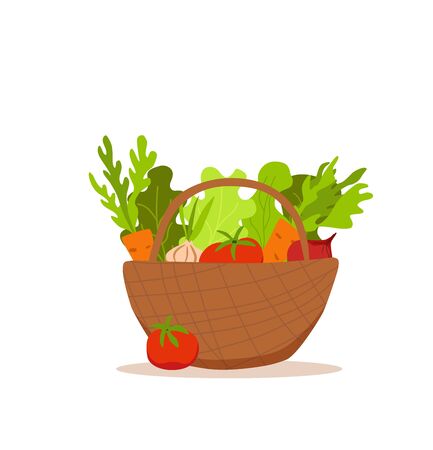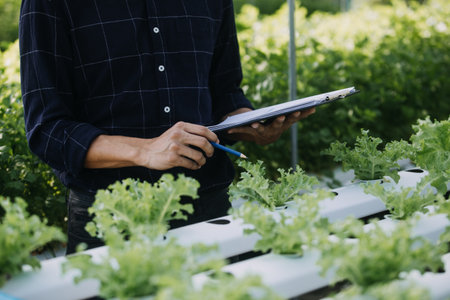Why Start Vegetables from Seed?
Starting vegetables from seed is an exciting and rewarding way to kick off your gardening journey. Whether you’re planning to grow indoors under lights or sow seeds directly outdoors, there are plenty of reasons why starting from seed makes sense for American home gardeners. First, growing from seed is budget-friendly—you’ll get dozens of plants for the price of a single nursery transplant. This means more tomatoes, peppers, or greens for your garden and your table, without breaking the bank. Second, seeds offer a world of variety that you just can’t find at your local big-box store or even at most garden centers. Fancy trying purple carrots, heirloom tomatoes, or unique hot pepper strains? Seeds open up a world of options perfectly suited to your tastes and climate. Finally, starting from seed puts you in the driver’s seat of the entire growing process. You’ll learn firsthand about plant growth stages, what each veggie needs to thrive, and how to nurture healthy seedlings into strong producers. Plus, it’s a fun family project—kids love watching tiny seeds transform into food they can harvest and eat right from the backyard.
2. Gathering Your Supplies
Before you get your hands dirty, it’s important to gather all the essential supplies for starting seeds indoors and outdoors. A little preparation goes a long way toward healthy, happy plants. Here’s what you’ll need:
Seed Choices
Selecting the right seeds is the first step. Consider your climate zone, your family’s favorite vegetables, and the space you have available. Some common beginner-friendly choices include tomatoes, peppers, lettuce, cucumbers, and beans. Be sure to check the seed packet for days to maturity and any special requirements.
Seed-Starting Mix
A quality seed-starting mix is lighter than regular potting soil and provides the drainage and aeration that seeds need to sprout. Avoid using garden soil, which can compact easily and may contain pests or diseases.
Containers
You don’t need fancy trays—though they’re handy! You can use anything from cell packs and peat pots to recycled yogurt cups (just poke drainage holes in the bottom). The key is good drainage so roots don’t rot.
| Container Type | Pros | Cons |
|---|---|---|
| Cell Packs/Seed Trays | Reusable, organized, easy transplanting | May require purchase if you don’t have them on hand |
| Peat Pots | Biodegradable, plant directly in ground | Can dry out quickly; costlier than plastic trays |
| Recycled Containers (cups, egg cartons) | Low-cost, eco-friendly reuse | May need extra drainage holes; can be flimsy |
Lighting
If you’re starting seeds indoors, natural sunlight isn’t always enough—especially in early spring when daylight hours are short. Fluorescent shop lights or LED grow lights work well. Place lights just a few inches above seedlings and adjust as they grow.
Heat Mats & Temperature Control
Many vegetable seeds germinate best in warm soil (around 70-75°F). Seedling heat mats can help maintain an even temperature for faster germination. Once seeds sprout, most seedlings prefer slightly cooler conditions.
Other Helpful Tools
You might also want plant labels (to keep track of varieties), a spray bottle for gentle watering, and a small fan for airflow—healthy seedlings like a light breeze!

3. Starting Seeds Indoors: Step-by-Step
If you’re eager to get a jump on the growing season, starting seeds indoors is the way to go. Here’s a straightforward guide for beginners who want to nurture vegetable seedlings right from their kitchen counter or spare room window.
Timing: When to Start Your Seeds
Check your seed packets for recommendations on when to sow indoors—most veggies need to be started 4–8 weeks before your area’s last expected frost date. In the U.S., this date varies by region, so check your local extension office or use an online tool like the USDA Plant Hardiness Zone Map to find yours.
Planting Depth and Containers
Select clean containers with drainage holes—think seed trays, peat pots, or even upcycled yogurt cups. Fill them with a quality seed-starting mix (not garden soil), then plant your seeds at the depth recommended on the packet, usually about two times as deep as the seed’s diameter. Gently press down and mist the surface with water.
Watering: Keep It Moist, Not Soaked
Seeds need consistent moisture but not soggy conditions. Cover trays loosely with plastic wrap or a humidity dome until seedlings emerge to help retain moisture. Water gently using a spray bottle or by setting containers in a tray of water so soil wicks up moisture from below.
Warmth: Creating the Right Environment
Most veggie seeds germinate best at temperatures between 65°F and 75°F. If your home is chilly, consider using a heat mat under your trays. Once seedlings sprout, move them off the heat mat so they don’t get leggy.
Light Setup: Mimicking Sunny Days
Seedlings need plenty of light—12 to 16 hours a day—to grow strong. A sunny south-facing window can work if it gets enough daylight, but most folks have better luck with fluorescent or LED grow lights set just a few inches above the plants. Adjust lights as seedlings grow to keep them close without touching.
With these steps, you’ll soon have sturdy little plants ready for life outdoors—and nothing beats watching that first sprout pop up after a long winter!
4. Caring for Seedlings
Once your seeds have sprouted, giving your seedlings the right care is key to growing strong, healthy vegetable plants. Here are some practical tips and common-sense approaches to help you nurture those little green shoots, whether you’re working indoors under grow lights or outdoors in a sunny spot.
Watering Methods: Finding the Balance
Seedlings have delicate roots that need just the right amount of moisture. Too much water can cause damping-off disease (a fungus that kills young plants), while too little can dry them out quickly. The goal is to keep the soil consistently damp but never soggy. Bottom watering—where you pour water into the tray and let the soil soak it up—is a favorite method because it encourages roots to grow downward and helps prevent mold on leaves. Always check soil moisture with your finger; if the top half-inch feels dry, it’s time to water.
Preventing Leggy Plants: Light and Airflow
Leggy seedlings are tall, spindly, and often weak—a common issue when they’re reaching for more light. To prevent this:
- Make sure your seedlings get 12-16 hours of bright light each day. If you’re using grow lights, keep them just a few inches above the tops of your plants and adjust as they grow.
- If starting seeds on a windowsill, choose a south-facing window and rotate trays daily so all sides get equal sun.
- Gently run your hand over the tops of seedlings or use a small fan for a couple hours daily to simulate wind—this strengthens stems and improves airflow, reducing fungal problems.
When to Fertilize: Feeding Young Plants
After your seeds germinate, they’ll rely on nutrients stored within their seed coat for the first week or two. Once they develop their first set of “true leaves” (the second set of leaves that appear), it’s time to start feeding them lightly. Use a balanced, water-soluble fertilizer diluted to half strength every 1-2 weeks. Over-fertilizing can burn young roots—less is more at this stage.
Quick Reference Table: Seedling Care Tips
| Task | How Often | Best Practice |
|---|---|---|
| Watering | Check daily | Bottom water when top soil feels dry |
| Light Exposure | 12-16 hours/day | Use grow lights close to seedlings; rotate trays in natural light |
| Airflow | Daily | Fan or gentle brushing for sturdy stems |
| Fertilizing | Every 1-2 weeks after true leaves appear | Dilute fertilizer to half strength |
A Little Extra Love Goes a Long Way
Caring for seedlings is all about observation and patience. Watch how your plants respond and don’t be afraid to make adjustments—it’s part of the fun and learning process of home gardening in America!
5. Hardening Off and Transplanting Outdoors
After weeks of nurturing your seedlings indoors, it’s finally time to prepare them for life outside in your garden beds or raised planters. This crucial step is called “hardening off”—and trust me, it’s worth the extra effort. Think of hardening off as training camp for your young plants: you’re helping them toughen up and adjust to real-world conditions like wind, sunlight, and fluctuating temperatures.
Why Hardening Off Matters
Seedlings raised indoors are used to cozy, stable conditions—plenty of water, no direct sun, and consistently warm temps. If you move them straight outdoors, they can go into shock and may wilt or stall. Hardening off gradually introduces them to the elements so they can thrive when transplanted.
How to Harden Off Seedlings
About a week before transplanting, start taking your seedlings outside for a few hours each day. Begin with a sheltered spot out of direct sunlight and wind. Gradually increase their exposure to sun and breeze each day, leaving them out longer until they’re spending full days (and eventually nights) outdoors. Remember to bring them back inside if there’s a late frost or heavy rain in the forecast.
Timing Your Transplants
The best time to transplant depends on your local climate and the vegetables you’re growing. Most summer veggies—like tomatoes, peppers, and squash—need the soil to be consistently above 60°F (16°C) at night before they go outside. Check your last expected frost date using your ZIP code (the Old Farmer’s Almanac is a handy resource), and aim to transplant after that date has passed. For cool-season crops like lettuce or broccoli, you can transplant a little earlier while the weather is still mild.
Transplanting Tips
When you’re ready to plant, choose a cloudy day or wait until evening so seedlings aren’t shocked by direct midday sun. Gently remove each seedling from its pot, trying not to disturb the roots too much. Plant at the same depth they were growing indoors (except for tomatoes—they love being planted deeper). Water well after transplanting and keep an eye on them for the first week as they settle into their new home.
With patience and these simple steps, your homegrown seedlings will make a smooth transition from windowsill to vegetable patch—and before you know it, you’ll be harvesting fresh produce right from your own backyard.
6. Direct Sowing Seeds Outdoors
Direct sowing is one of the most rewarding—and sometimes easiest—ways to start your vegetable garden. Instead of transplanting seedlings, you plant seeds directly into your prepared garden beds or containers. This method works especially well for crops like carrots, radishes, beans, peas, and sunflowers, which often dislike being moved after sprouting.
How to Direct Sow Successfully
Start by reading the seed packet for each crop—this little label is packed with info about how deep and far apart to plant your seeds. Generally, seeds are planted at a depth about twice their size. Create shallow rows or holes in your soil, drop in the seeds according to recommended spacing, and gently cover them with soil. Water carefully so you don’t wash away those precious seeds.
When to Plant Outdoors
The right timing depends on your local climate and the vegetable variety. Cool-season crops like lettuce and peas can be sown as soon as the soil can be worked in spring, while warm-season crops such as beans and squash need soil temperatures above 60°F (16°C). Check your USDA hardiness zone and use it as a guide for frost dates—most seed packets will reference these too.
Where to Plant: Beds or Containers?
Choose a spot that gets plenty of sunlight—most veggies need at least six hours a day. Raised beds warm up quickly in spring and offer excellent drainage. If space is tight, large containers work great; just make sure they’re deep enough for root development and have drainage holes.
Spacing & Care Tips
Follow spacing guidelines closely—crowded seedlings compete for nutrients and sunlight, leading to weaker plants. Once seedlings emerge, thin them out if needed to give each plant room to grow strong. Keep the soil consistently moist but not soggy during germination. As plants mature, mulch helps retain moisture and suppress weeds.
By learning when and how to direct sow seeds outdoors, you’ll build confidence in growing veggies straight from the earth—no fancy equipment required, just a little planning and some good old-fashioned dirt under your nails!

